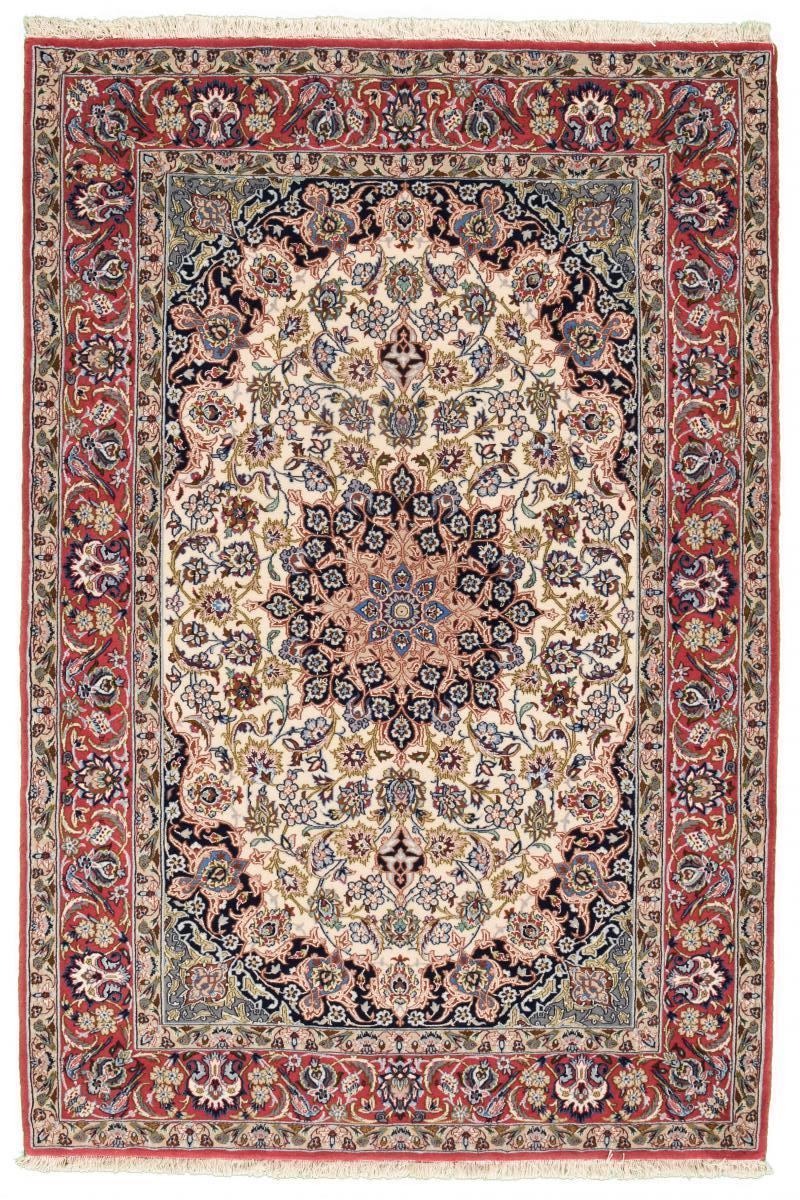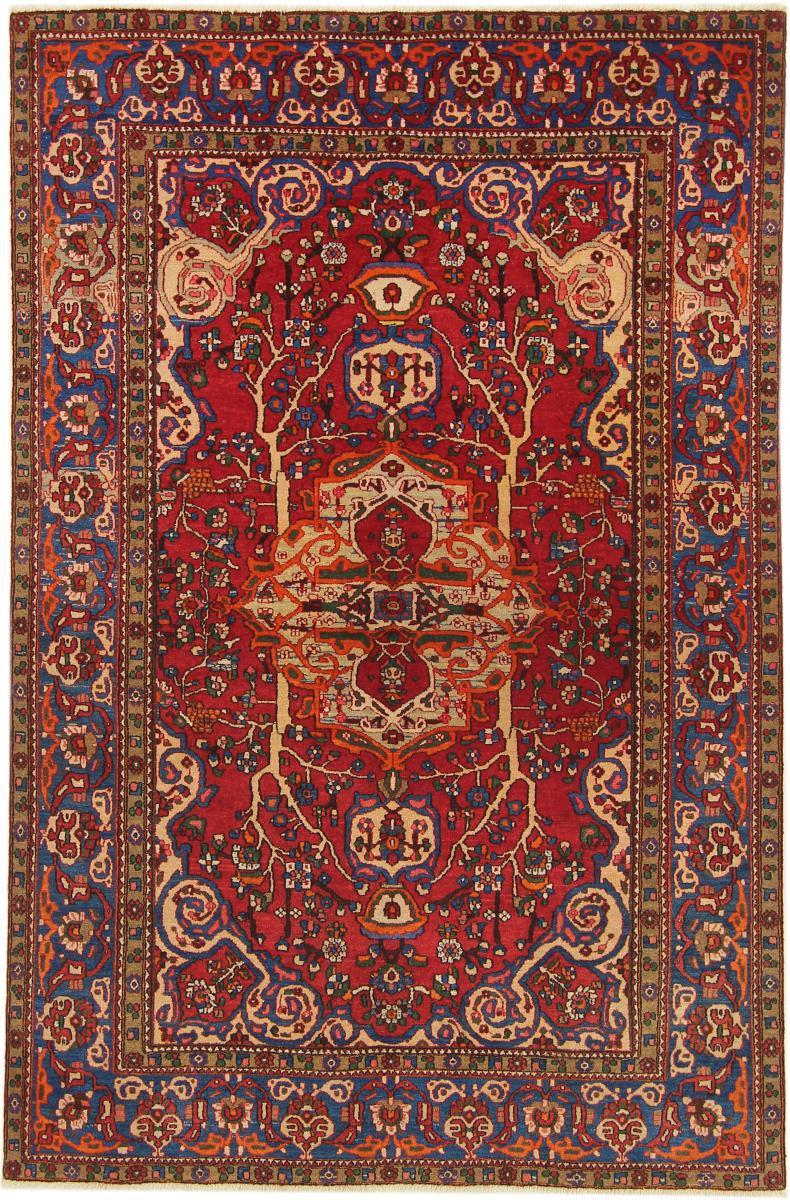Introduction of Isfahan handwoven carpet
Isfahan is located in one of the best regions of Iran geographically. Being located in the center of Iran with moderate climate, fertile soil and sufficient water of Zayandeh River has made Isfahan a suitable place to live. The name of Isfahan has probably been given to this city since the time of the Sassanids, when the sepahan (Ispahan) gathered in the fertile plains around it. The peak of prosperity, fame and prestige of Isfahan goes back to the Safavid period; When the kings of the Safavid dynasty chose Isfahan as the center of government, trade, culture and industry in the 10th century AH. In this article, we are going to introduce the hand-woven carpet of Isfahan, as one of the most important cultural and artistic centers of Iran.
Background of carpet weaving in Isfahan
With the efforts of Shah Abbas Safavi, the city of Isfahan achieved exemplary greatness and glory. The love of art of the Safavid kings, and the value and respect they had for artists, caused them to gather the best artists in any field, especially carpet weavers, in the workshops of Isfahan city. The first carpet weaving workshop in Isfahan was probably established during the reign of Shah Abbas Safavi (1588 to 1629 AD) in Isfahan. The carpet weaving workshops of the Safavid court started working next to the royal palace in the south of Ali Qapu, using the best raw materials for weaving and under the personal supervision of the king. Of course, the valuable carpets were mostly produced in the cities and villages around Isfahan, because the city of Isfahan itself is not suitable for this work due to the fact that its water is contaminated with a large amount of gypsum. Valuable examples from this period adorn the museums of the world. Shah Tahmaseb Safavi also had a great interest in the art of carpets and carpet weaving. Interestingly, he ordered the weaving of exquisite carpets and donated them to Sulaymaniyah Mosque in Istanbul, and it is said that he himself designed designs for this carpet. Shah Abbas Safavi established workshops in the cities of Isfahan, Kashan and other cities, and raised this carpet weaving to the level of a valuable art. At that time, carpets were woven in the city of Kashan using silk and gold. After the Safavid era, exquisite carpets have been woven in the city of Isfahan in the last hundred years, and this region and its surrounding cities are still considered among the most important carpet weaving centers in Iran, but Isfahan carpets have never reached their peak and beauty during the Safavid period.
The famous carpet of Sheikh Safi Ardabili
The famous Ardabil carpet is one of the biggest and most valuable treasures of the Victoria and Albert Museum in London, which was woven in 929 AH, and in the last years of Shah Ismail's Safavid reign. This carpet is among the most beautiful carpets of Safavid history, and Iran. It is said that this exquisite carpet was woven by the order of Shah Tahmasab and to donate it to the tomb of his ancestors in Ardabil. This beautiful carpet is considered one of the most exquisite and famous carpets in the world in terms of design and texture, which is included in the list of 50 selected artistic masterpieces of the world. Art experts consider this exquisite and original carpet with its beautiful patterns and patterns to be a unique abstract work of art, which is equal to the abstract paintings of the current century in terms of artistic quality.
Appearance and technical features of Isfahan handwoven carpet
Isfahan hand-woven carpet is considered one of the most beautiful and original Iranian carpets in terms of variety in color and originality in design. In the following, we will give a detailed explanation of each characteristic of the Isfahan carpet.
Design and color in Isfahan carpet
In general, it can be said that the patterns of Isfahan carpets are large in terms of size, and often include flower and bush motifs. In these carpets, the Qandeel form is replaced by the head of the bergamot. Currently, most carpets in Isfahan city are woven with lach and tanraj patterns. Also, in the text of the carpets of this region, there are slimis that circulate around it independently of the middle tang and create beautiful designs. Tree designs, hunting ground, farang flower and frame are other motifs used in Isfahan handwoven carpets . The eye-catching variety of colors in a beautiful and pleasant way, which is taken from the traditional and authentic Iranian arts, can be seen in the Isfahan hand-woven carpet, along with the traditional and authentic Iranian motifs that can be seen in all traditional handicrafts, especially in Iran. So that now the Isfahan carpet can be considered one of the most original carpets in Iran, whose artists work diligently and fanatically to preserve its authenticity. The colors used in the texture of Isfahan hand-woven carpets are one of the main features of these carpets. In order to determine the authenticity and recognition of the Isfahan carpet, many experts consider its color along with the pattern. A world of colors can be seen in every Isfahan carpet. Some of these carpets even have up to 14 colors. Usually, in Isfahan carpet texture, the use of cold colors is more common than warm colors. In general, the variety of colors, especially happy colors (with an emphasis on the traditional colors of Iranian carpets) is high in Isfahan, and the most important ones are: lacquer, cream, green, beige, copper, maroon, khaki, turquoise, indigo, almond, diamond, ivory. and navy blue Each of these colors are used in dark and light degrees and with less and more intensity in the carpets of this region. The use of yellow and gold colors in carpet patterns is one of the characteristics of Isfahan carpets. The harmony and beautiful combination of color and design is one of the most characteristic features of Isfahan carpet. The beautiful and hand-woven carpets of Isfahan have the weaver's signature on them.

Dimensions of handmade carpets in Isfahan
The size of Isfahan carpets often includes a cubit and a half, two cubits, and a maximum of 6 meters or 9 meters. Dimensions larger than 6 square meters are rarely seen in today's Isfahan carpets.
Fibers used in weaving
Wool and silk are usually used as piles in Isfahan carpet weaving. In normal carpets, cotton thread is used as warp or skein; But in special and exquisite examples, silk thread is used as a cheleh, which is one of the special features of Isfahan's contemporary carpet weaving.
Type of texture and index of Isfahan carpets
Isfahan hand-woven carpets are classified in the category of urban Persian woven carpets. The type of knot used in weaving in this area is the Persian (or asymmetric) knot. The tufting of these carpets is also in the Persian style, and in most cases, the edges are made of koji. The pile length of Isfahan carpets is short. Isfahan carpets are classified in the category of fine texture. The index of these carpets is usually between 50 and 70, and sometimes even up to 90. Carpet weavers in Isfahan are usually vertical and fixed. Carpet finishing is always done during weaving, and after finishing each row of weaving, the weaver trims the piles manually using scissors. As it was said, the type of chelekshi in Isfahan handwoven carpets is Persian. At the beginning and end of the weaving, carpet weaving is also done in Persian style using a thick weft. Shirazeh weaving in Isfahan carpets is done during weaving. Currently, Isfahan's handwoven carpets are two-weave type, and almost tend to be woven. This is despite the fact that the old carpets of Isfahan, especially in the Safavid period, were more of the half-loop type. Three wefts have also been observed in limited numbers in Safavid period carpets.
What is the forty-piece Isfahan carpet?
One of the unique features of hand-woven carpets is that second-hand and used hand-woven carpets are sometimes more expensive and valuable than new carpets. This is also the case with the Isfahan carpet. This is because the more the handwoven carpet is worn, the brighter and more beautiful it becomes. But in some cases, these carpets are damaged to such an extent that they are unusable and lose their value. Therefore, some people active in the field of weaving and buying and selling carpets collect and pay for these old and damaged handwoven carpets . The healthy parts are separated from the damaged parts and sewn together in a special order. These types of carpets, which are very attractive and special, are called "forty-piece carpets", and in some cases, they are even as valuable as Isfahan's hand-woven carpets.
Isfahan round handwoven carpet
The weaving of circular carpets in different dimensions is popular in Isfahan as well as in Tabriz. In fact, one of the most attractive hand-woven carpets in Isfahan is round carpets that are woven with different designs and in various sizes. These rugs are woven from circular padri size to large circular rugs. The index of round carpets is also different compared to rectangular carpets. Round carpets are mainly woven with wool or silk fibers and the proportion of these fibers is different in different carpets.
Isfahan all-silk carpets
Isfahan's all-silk hand-woven carpet is an elegant and noble carpet that has remarkable beauty. Due to the use of silk, this type of carpet has bright colors, its thickness is low and they are woven with a very high quality. All-silk carpets of Isfahan are included in the category of export luxury goods. Since silk is used in the texture of these carpets, they have a very high price.
Dome design in Isfahan handwoven carpet
"Dome" design is one of the original and special designs in Isfahan handwoven carpet. The design of this carpet is adapted from the design and icon of the dome of Sheikh Lotfollah mosque in Isfahan. Currently, this design is woven by combining different colors. The carvings and carvings of the "Dome Pattern" carpet of Isfahan are exemplary elegance. This carpet is woven with 1/4 map and is perfect for decorating aristocratic spaces.
Conclusion
In general, the hand-woven Isfahan carpet can be considered a carpet with an original design and diverse and traditional colors. Lachak and toranj are the most common motifs used in Isfahan carpets, and in addition to that, tree designs, hunting grounds, farang flowers and frame frames are also used in the carpets of this region. Wool, cotton and silk, raw materials in weaving, and Persian knot and Persian Chele keshi, are other features of Isfahan carpet weaving.
You can inquire about Buying Handwoven Carpets , Buying Handwoven Kilim and Mats , and Buying Handwoven Pictorial Rug Tableaus online from the Hoveida Carpet Store and register all your orders and Wherever you are in the world, deliver it to the desired address in less than 4 working days.
If you are interested in reading other articles in the field of Handwoven carpets or Handwoven Pictorial Rug Tableaus , please refer to Hoveida Carpet Commercial
Leave a comment
Your email address will not be published. Required fields are marked *












